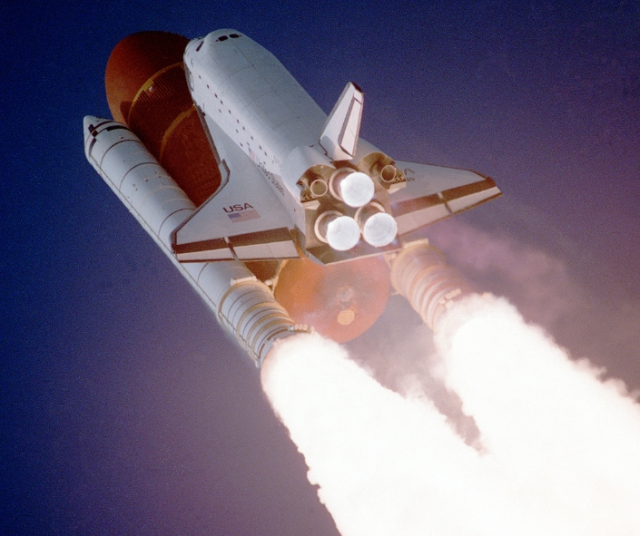April 12, 1961 marked a milestone in the history of space exploration: Yuri Gagarin became the first human being to travel into space. This pioneering achievement not only symbolized a major scientific and technological breakthrough, but also opened the door to a new era of cosmic exploration and discovery. Since then, human spaceflight has been a constantly evolving field of research and adventure. To honor this milestone and celebrate human exploration of the cosmos, International Human Spaceflight Day has been established.
The history of human spaceflight is filled with pivotal moments that have defined the path of space exploration. On April 12, 1961, Yuri Gagarin, a Soviet cosmonaut, became the first human to orbit the Earth aboard the Vostok 1 spacecraft. This achievement, known as "Gagarin's Flight," was a momentous event that demonstrated that humans could travel and survive in space.
This milestone was followed by the American space program, culminating in the famous Moon landing of the Apollo 11 mission in 1969. Neil Armstrong and Buzz Aldrin became the first humans to walk on the Moon, while Michael Collins orbited around it in the command module. This historic achievement was not only a technological triumph, but also united humanity in a spirit of exploration and discovery.
Over the years, various nations have developed manned space programs, including Russia, the United States, China, and more recently, private companies such as SpaceX. Each of these programs has contributed to the advancement of space technology, scientific research and international collaboration in space.
The Benefits of Manned Space Exploration
Manned space exploration has brought a number of significant benefits to humanity over the years. Some of these benefits include:
Technological Advances: The research and development required to send humans into space has resulted in numerous technological advances that have applications on Earth, such as the miniaturization of electronics, telemedicine, materials research, and solar energy.
Scientific research: Manned missions have allowed scientific experiments to be carried out in microgravity conditions that would not be possible on Earth. These experiments have contributed to our understanding of biology, physics and chemistry, among other disciplines.
International collaboration: Space exploration has promoted collaboration between nations, even amid political tensions. The International Space Station (ISS) is a prominent example of this type of cooperation, with the participation of multiple countries.
Inspiration and education: Achievements in space exploration have served as a source of inspiration for generations of people, fostering interest in science, technology, engineering and mathematics (STEM). Astronauts have become heroes and role models for many young people.
Challenges of Manned Space Exploration
Although manned space exploration has had many successes, it has also faced significant challenges over the years. Some of these challenges include:
- High Costs: Manned space missions are extremely expensive due to the need for life support systems, training and additional safety for astronauts.
- Health Risks: Astronauts face health risks in space, such as radiation exposure and loss of bone and muscle mass due to microgravity. These risks must be addressed for future long-duration missions, such as trips to Mars.
- Sustainability and environment: Space exploration has also raised concerns about sustainability and environmental impact, such as the accumulation of space debris in Earth orbit.
The Future of Manned Space Exploration
Despite the challenges, manned space exploration has an exciting future ahead. Several projects and missions are in development, and their success could open new opportunities and challenges for space exploration.
Mars Exploration: Manned missions to Mars have been in the crosshairs for a long time. Organizations like NASA and private companies like SpaceX have expressed interest in carrying out manned missions to the Red Planet in the coming decades.
The Moon as a launch pad: The Moon is being considered as a potential base for manned missions beyond our solar system. The Moon's proximity to Earth makes it an ideal launch pad for missions to other destinations.
Space tourism: The space tourism industry is rapidly growing, with companies like Virgin Galactic and Blue Origin offering suborbital travel to civilians. This could open the door to greater participation by ordinary people in space exploration.
Sustainability and space care: As space activity increases, it has become more important to address sustainability and space care. Space debris removal and responsible resource management are key issues.
International Day of Human Spaceflight
International Human Spaceflight Day is celebrated on April 12 each year in honor of Yuri Gagarin's flight. This commemorative date aims to remember and celebrate the achievements in manned space exploration and raise awareness of its continued importance.
Celebrating this day can take many forms, from educational events and conferences to space film screenings and visits to museums and space exploration centers. It is an opportunity to inspire future generations to get involved in science and space exploration.
As we move into the 21st century, space exploration will continue to challenge science and technology, as well as human imagination and creativity. International collaboration and investment in space research are crucial to meeting the challenges and taking advantage of the opportunities offered by the cosmos. On International Human Spaceflight Day, we reflect on our past in space exploration and look excitedly to the future, where humanity will embark on new and exciting adventures in space.
